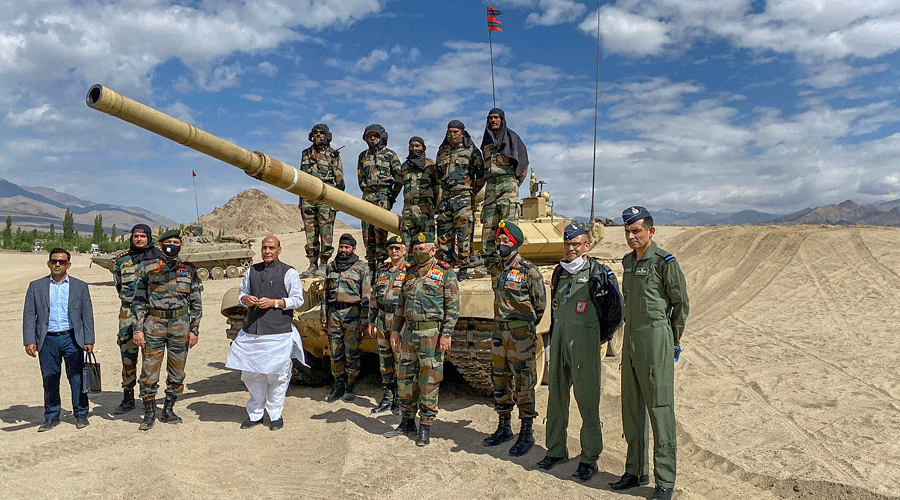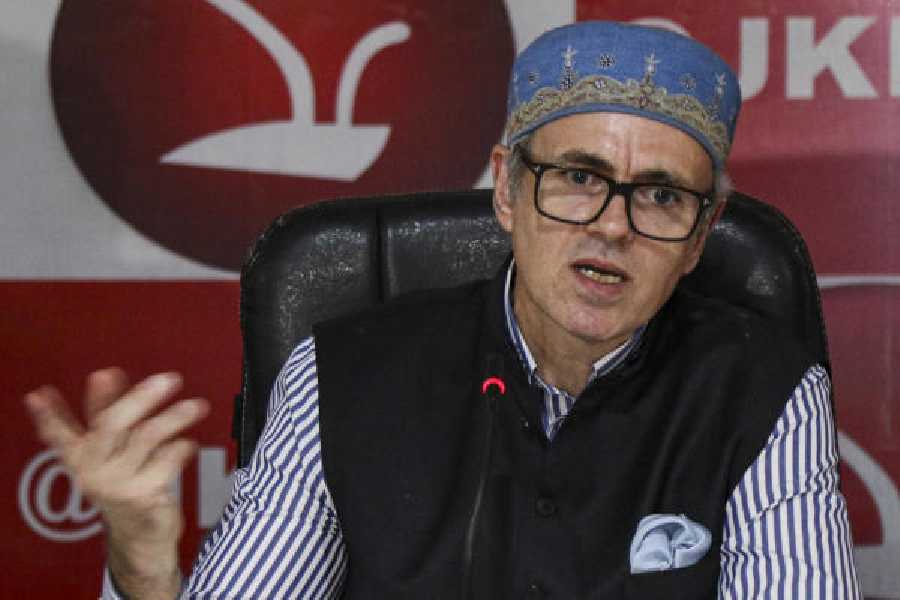A ground assessment by the Indian Army suggests the disengagement process has hit a dead end and that the Chinese have failed to act on their commitment to pull back from India-claimed lines in eastern Ladakh, defence ministry sources have said.
“Despite the agreement reached during the fourth round of military talks (July 14-15), reports and assessment from the ground suggest the Chinese troops have failed to honour their commitment to retreat from the friction points, where they have undertaken a lot of construction,” a ministry official told The Telegraph on Wednesday.
“They continue to hold their ground on Indian territory in the Pangong Lake area and the Depsang Plains. They seem in no mood to disengage.”
He said there was “no visible change in ground positions since the fourth round of military talks”.
“The military brass have updated the political leadership about the ground assessment,” he added.
India’s security establishment is worried that despite the agreement for disengagement, the Chinese are continuing their aggressive deployment of troops in front areas and depth areas along the Line of Actual Control.
According to an estimate, the Chinese have deployed nearly 40,000 troops and heavy weaponry, including air defence systems, along the eastern Ladakh border. “We are very sceptical of China’s intentions,” an Intelligence Bureau official said.
After the July 14-15 talks, the Indian Army and the foreign ministry had described the disengagement process as “intricate” and “complex”, appearing to imply the Chinese were holding out in some respects, at least.
A day later, defence minister Rajnath Singh told the troops in Ladakh that while the “progress” of the talks suggested the border situation should be resolved, he could not give any “guarantee”.
The two countries have since May been holding diplomatic and military-level talks to resolve the border standoff, which witnessed the death of 20 Indian soldiers in the Galwan Valley on June 15.
Each side is said to have moved back 1.5km from the June 15 face-off site and from Hot Springs by creating “buffer zones” within India-claimed lines, a move being seen as a “short-term” solution.
Military veterans and security officials have questioned the logic of what they see as a “compromise” formula that forces India into “territory loss”.
They have criticised India’s “soft” stance of negotiating piecemeal matters instead of pushing harder on the larger issue of restoring status quo ante.
“Ground reports indicate the Chinese are still camping inside Indian territory in the Galwan Valley and Hot Springs. Despite the talks, we have not seen the Chinese disengaging in any meaningful manner,” the IB official said.
The Chinese are said to be ensconced 8km inside India-claimed lines near the Pangong Lake (up to the Finger 4 area), and 18km into Indian territory at the Depsang Plains.
They are also said to have erected observation posts at these friction points, installing CCTV cameras to keep an eye on the Indian troops.
“So far, India’s government has been economical with the truth on the incursion. It has not revealed any specific details of the agreed parameters of disengagement,” an army veteran said.
“Nor has it officially said how far the Chinese have retreated. Why are we so subdued on an issue concerning the country’s sovereignty?”
Be ready, IAF told
Rajnath on Wednesday addressed senior air force commanders and urged them to be ready to “handle any eventuality”, sources said.
“The defence minister praised the air force for the swift deployment of its assets at forward locations in eastern Ladakh. He said it had sent a strong message to the adversaries,” an official said.










